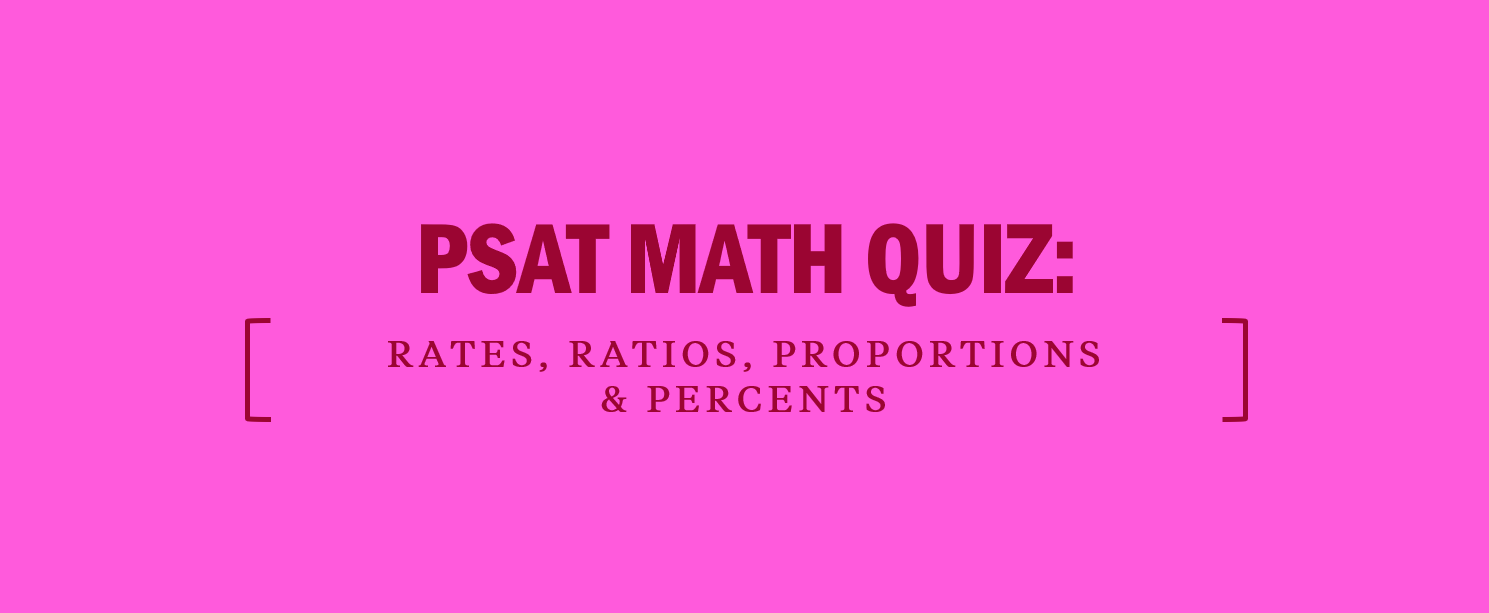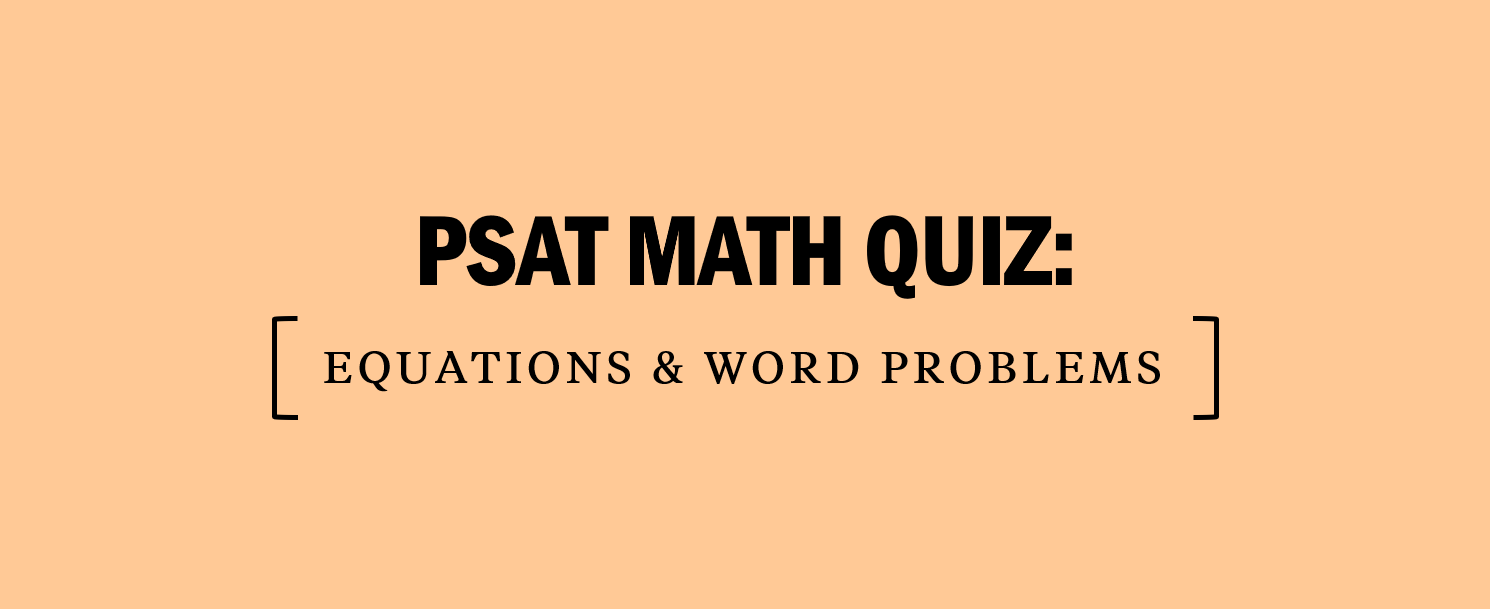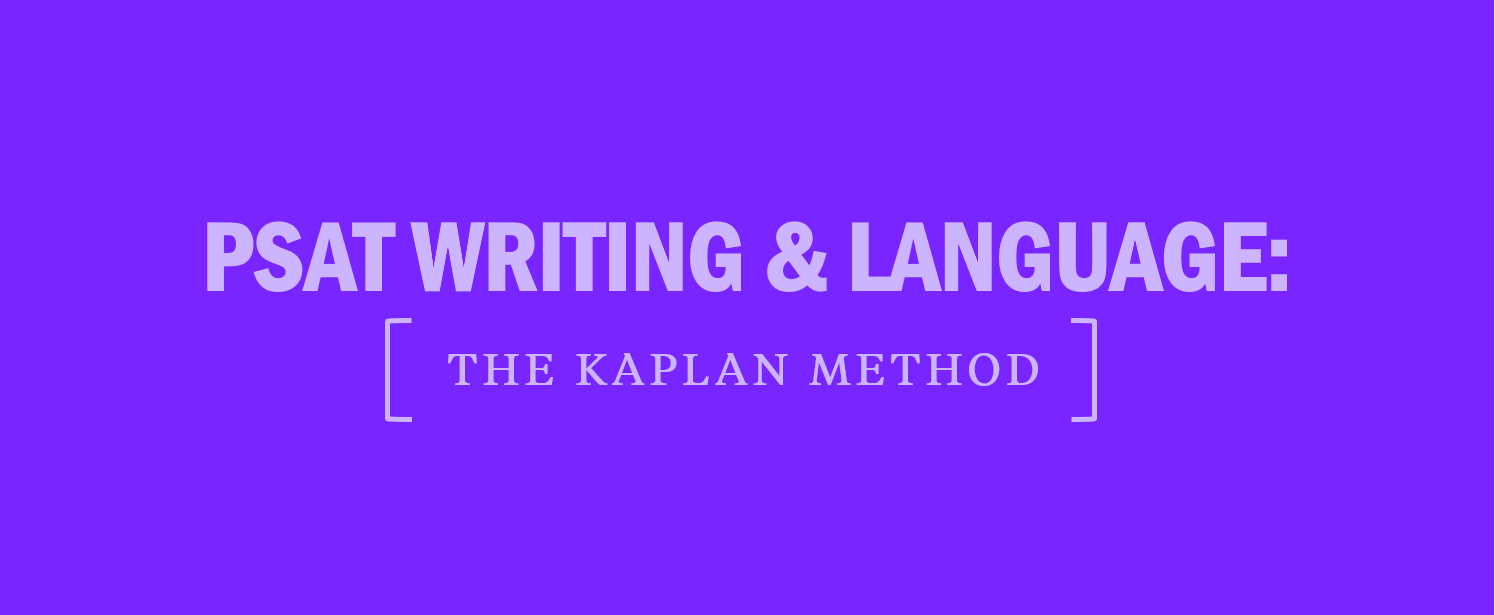PSAT Math Quiz: Rates, Ratios, Proportions, and Percents
Content Review:
Test your PSAT readiness by taking this PSAT math quiz!
Answer 1
B: To answer a question that says “directly proportional,” set two ratios equal to each other and solve for the missing amount. Don’t forget–match the units in the numerators and in the denominators on both sides.
Let c equal the number of cars that can safely pass through a light that lasts 24 seconds. Set up the proportion and solve, to find that (B) is correct.
(9 cars / 36 seconds) = (c cars / 24 seconds)
9 x 24 = 36 x c
216 = 36c
6 = c
Answer 2
Find the percent increase using the formula: percent change = amount of change divided by original amount. Then apply the same percent increase to the amount for 2013. The amount of increase is 30,100 – 15,800 = 14,300, so the percent increase is 14,300 ÷ 15,800 = 0.905 = 90.5% over 25 years.
If the total percent increase over the next 25 years is the same, the average cost of tuition and fees will be 30,100 x 1.905 = 57,340.50, or about $57,300, which is (C).
Answer 3
D: You need to find the ratio of milk to water. You’re given two ratios: milk to eggs and water to eggs. Both of the given ratios contain eggs, but the egg amounts (2 and 3) are not identical.
To directly compare them, find a common multiple (6). Multiply each ratio by the factor that will make the number of eggs equal to 6:
Milk to Eggs: (5:2) x (3:3) = 15:6
Water to Eggs: (4:3) x (2:2) = 8:6
Now that the number of eggs needed is the same in both ratios, you can merge the two ratios to compare milk to water directly: 15:6:8. Therefore, the proper ratio of milk to water is 15:8, (D).
Answer 4
C: When a question involves several rates, break the situation into separate, manageable pieces and deal with each in turn. Visitors must pay the cafe a flat $25.00 fee to join regardless of the number of visits. The first 50 visits cost $0.30 each, or 50($0.30) = $15.00.
The remaining 72 – 50 = 22 visits cost $0.10 each, or 22($0.10) = $2.20. The total cost for 72 visits is therefore $25.00 + $15.00 + $2.20 = $42.20, which is (C).
Answer 5
C: It’s easiest to compare two amounts when they are written in the same units, so start by converting the car’s pints to quarts and then go from there. The conversion from pints to quarts is straightforward.
8 pt x (1 qt / 2 pt) = 4 qt
Next, find the amount of zinc in each car using the percent formula: percent x whole = part. Write the percents as decimals and multiply:
Car: 0.09 x 4 quarts = 0.36 quarts of zinc
Truck: 0.04 x 6 quarts = 0.24 quarts of zinc
Finally, compare the amount in the car to the amount in the truck:
(0.36 / 0.24) = 1.5. The car has 1.5 times as much zinc in the oil pan as the truck, which is (C).
Previous: PSAT Math Quiz: Systems of Equations
Next: PSAT Math Quiz: Exponents, Roots, and Polynomials






